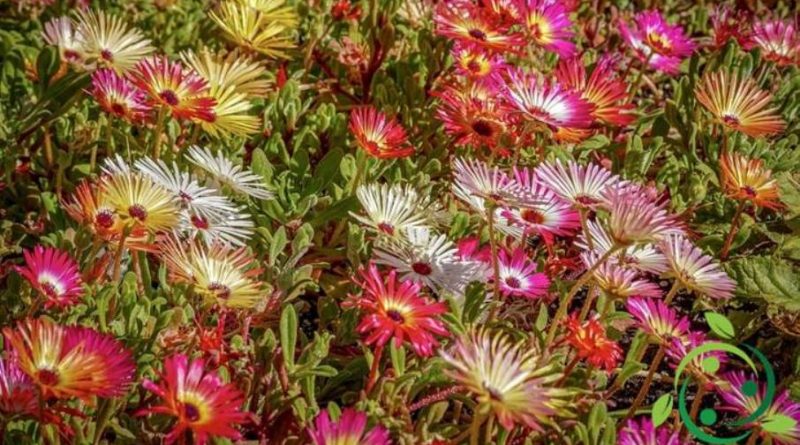How to grow Delosperma
How to grow Delosperma
Delosperma (Delosperma N.E.Br., 1925) is a genus of plants of the Aizoaceae family that includes very branched dwarf succulent plants; these plants are characteristic because they have a very abundant flowering that produces white, yellow, fuchsia and red flowers. The flowering continues continuously for months, from May to winter. Furthermore, a peculiarity of these flowers is that at night they close, only to reopen when the sun rises, moreover the flowers have are particularly welcome to butterflies, bees and other pollinators.
In this card we will see how to cultivate Delosperma considering that they are very tolerant to diseases and resistant plants: in the garden they can be used in flower beds or as ground cover, for example in rock gardens, but they can be grown successfully even in pots, giving a touch of color on terraces and balconies.
Among the cultivated species and varieties we recall:
– Delosperma angustifolia – with very dense vegetation that forms bearings of thin dark-green leaves and its flowers are white;
– Delosperma cooperi – is perhaps the most widespread species and there are several varieties. The leaves are short and very thick, the twigs lignify over time. The flowers are lilac. Resists even at sub-zero temperatures for short periods;
– Delosperma echinatum – which can reach 30 cm in height with succulent and tuberculate leaves and both white and yellow flowers;
– Delosperma grandiflorum – a species that reaches a height of one meter and produces large purplish-red flowers;
– Delosperma nubigenum – the blooms are yellow and bright and the corollas particularly large. It reaches a maximum height of 30 cm.D. angustifolia – with thin leaves it creates, growing, cushions of vegetation. The leaves, dark green, contrast nicely with the white flowers;
– Delosperma sphalmanthoides – reaches a height between 5 and 10 cm., The flowers can be of the giant of the category, being able to reach even a meter of height! Even the flowers, red-violet in color, are particularly large.
For the cultivation of these plants it is necessary to choose a sunny position, to have abundant and colorful flowers, and the interesting thing is that it bears well the cold of winter. In any case it is advisable to put them away when the temperature drops below -5 ° C.
These plants do not require particularly rich soils, but it is important that they are well drained, since, like all succulents, this plant does not tolerate stagnant water.
Especially if grown in pots, use a sandy and very well draining soil.
It is very tolerant of drought and can remain without even for long periods.
For irrigation, remember that Delosperma should be watered only in good weather and when it is needed, and then suspend completely in winter.
In fact, to avoid stagnation of water it is advisable to carry out scarce watering even in summer (every 3-4 days if the plants are in pots, a little more frequent if they are in the ground) and being careful to let the soil dry out between a and the other; the single watering, however, must be abundant. In autumn and winter the frequency of bathing can be reduced.
For fertilization, it is regulated differently if the plants are grown in the ground or in pots.
If they are grown in the open ground they should be fertilized with well-humified organic substance at the beginning of spring with vegetative growth; the fertilizer must be mixed in the first layers of soil taking care not to reach the roots.
If cultivated in pots, it can be fertilized every 15 days with a specific product for cacti, in the spring and summer only.
Unlike other succulent plants the Delosperma is a plant that has a good speed of development, something that requires every year, if cultivated in pots, to repotting. Choose large and shallow containers, as the growth of the plant will be mainly horizontal. In case of cultivation in pots, always empty the saucer from excess water.
As far as the multiplication of Delospermas is concerned, the cutting can be used very easily: the twigs take root very easily. Sometimes it is also possible for the plant to produce suckers but, as already mentioned, even the normal twigs are excellent cuttings.
As far as cultivation techniques are concerned, the plant does not require further treatment, except to remove any faded flowers, to encourage the birth of new ones and provide a liquid fertilizer to stimulate the blooms if it is cultivated in pots.
Delosperma are very suitable plants to be cultivated in rock gardens.

